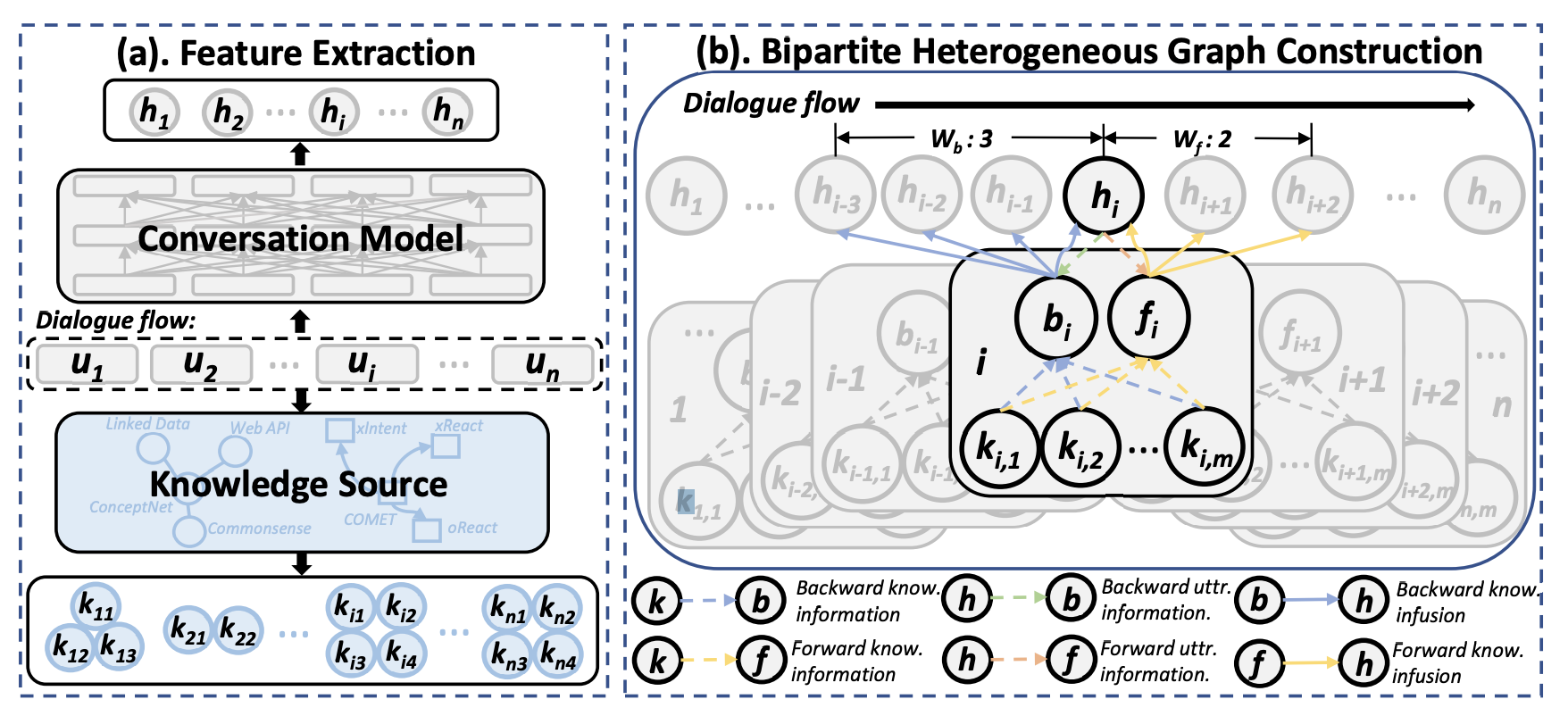A Bipartite Graph is All We Need for Enhancing Emotional Reasoning with Commonsense Knowledge
The context-aware emotional reasoning ability of AI systems, especially in conversations, is of vital importance in applications such as online opinion mining from social media and empathetic dialogue systems. Due to the implicit nature of conveying emotions in many scenarios, commonsense knowledge is widely utilized to enrich utterance semantics and enhance conversation modeling. However, most previous knowledge infusion methods perform empirical knowledge filtering and design highly customized architectures for knowledge interaction with the utterances, which can discard useful knowledge aspects and limit their generalizability to different knowledge sources. Based on these observations, we propose a Bipartite Heterogeneous Graph (BHG) method for enhancing emotional reasoning with commonsense knowledge. In BHG, the extracted context-aware utterance representations and knowledge representations are modeled as heterogeneous nodes. Two more knowledge aggregation node types are proposed to perform automatic knowledge filtering and interaction. BHG-based knowledge infusion can be directly generalized to multi-type and multi-grained knowledge sources. In addition, we propose a Multi-dimensional Heterogeneous Graph Transformer (MHGT) to perform graph reasoning, which can retain unchanged feature spaces and unequal dimensions for heterogeneous node types during inference to prevent unnecessary loss of information. Experiments show that BHG-based methods significantly outperform state-of-the-art knowledge infusion methods and show generalized knowledge infusion ability with higher efficiency. Further analysis proves that previous empirical knowledge filtering methods do not guarantee to provide the most useful knowledge information. Our code is available at: https://github.com/SteveKGYang/BHG.
PDF Abstract


 ConceptNet
ConceptNet
 IEMOCAP
IEMOCAP
 DailyDialog
DailyDialog
 MELD
MELD
 ATOMIC
ATOMIC
 EmoryNLP
EmoryNLP
 RECCON
RECCON